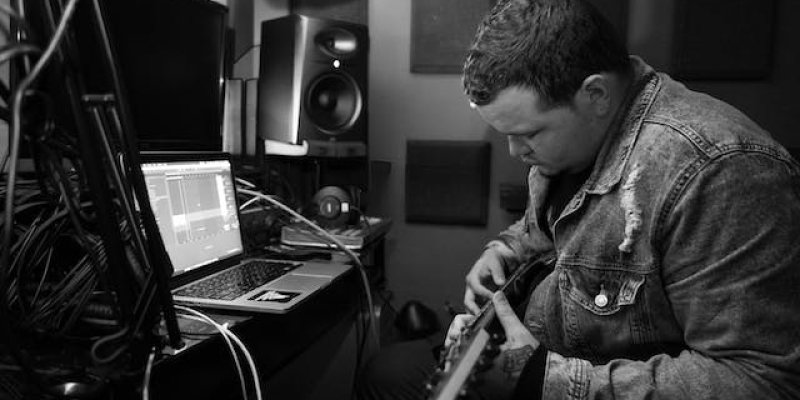
Studio acoustics refer to the way sound behaves in a room or studio space. It involves the study and manipulation of the characteristics of sound waves within a confined area, such as a recording studio, to achieve the best possible listening environment.
The shift to digital recording brings new challenges and opportunities for studio acoustics that independent recording artists like you and I should be well aware of!
While digital technology offers unprecedented flexibility, it also leads to home recording artists having the wrong acoustic environments and not capturing accurate representations of sound.
When your song quality suffers, your overall song success suffers. Here are a few key things that all home studio recording artists should know.
Good studio acoustics are a must in your home studio for several reasons, including:
Clarity and Accuracy: Proper acoustics help ensure that the sound you hear in a studio accurately represents the original audio source. This is crucial for recording, mixing, and mastering music or any other audio content.
Minimizing Distortions: Acoustic treatments can help reduce unwanted echoes, reverberation, and background noise. This ensures that the recorded sound is clear and free from distortions.
Isolation: Studio acoustics also involve preventing sound from leaking into or out of the studio. This is important for avoiding external noise interference and maintaining privacy.
Frequency Balance: Acoustic treatments can address issues related to the uneven distribution of sound frequencies in a room. This helps achieve a balanced and natural sound across the entire audible spectrum.
Creating a studio involves selecting a space that meets certain criteria to ensure optimal acoustics, comfort, and functionality. Here are some considerations for choosing an optimal space to turn into a studio:
Not Too Small or Too Large: A room that is too small can lead to sound reflections and standing waves, while a room that is too large may have issues with sound diffusion. Aim for a room size that provides a good balance.
Avoid Perfect Cubes: Cubic rooms tend to have more prominent standing waves and resonances. A room with varied dimensions and angles is preferable to prevent acoustic issues.
Adequate Ceiling Height: A higher ceiling can help with air circulation and minimize standing waves. However, excessively high ceilings may introduce additional challenges in terms of sound control.
Solid Construction: Choose a room with solid construction and minimal sound transmission. Avoid spaces with thin walls that can easily transmit sound.
Flooring: Carpeting or Rugs: Hard, reflective floors can contribute to sound reflections. Consider adding carpets or rugs to absorb some of the sound and create a more controlled acoustic environment.
Isolation: Choose a space that is isolated from external noise. This could mean avoiding rooms near busy streets, elevators, or other sources of disruptive sounds.
Acoustic Panels: These are designed to absorb sound reflections and reduce echoes. They come in various shapes and sizes and can be strategically placed on walls and ceilings to control the acoustics of a room.
Bass Traps: Bass traps are specialized acoustic panels designed to absorb low-frequency sound waves. Placing them in corners and along walls can help control bass build-up and improve overall room acoustics.
Diffusers: Diffusers scatter sound waves, helping to create a more balanced and diffuse acoustic environment. They are useful in controlling reflections while maintaining a sense of spaciousness in the room.
Curtains and Drapes: Heavy curtains or drapes can help absorb sound and reduce the reflection of sound waves off windows. This is beneficial in controlling mid to high-frequency reflections.
Cloud Panels: Hanging baffles or cloud panels from the ceiling can help absorb sound reflections and reduce the overall reverb in a room. This is particularly useful in rooms with high ceilings.
Acoustic Ceilings: Special acoustic ceiling tiles can be used to control sound reflections from the ceiling. These tiles are designed to absorb and diffuse sound, contributing to a more controlled acoustic space.
Carpeting and Rugs: Adding carpets or rugs to the floor can help reduce sound reflections and absorb high-frequency noise. This is especially beneficial in rooms with hard surfaces that contribute to sound reflections.
Bass Shakers: These devices are designed to absorb low-frequency vibrations. Placing bass shakers under furniture or in strategic locations can help control vibrations and improve the overall balance of sound in a room.
Acoustic Sealant: Acoustic sealant is used to seal gaps and cracks in walls, ceilings, and floors. This helps prevent sound leakage and ensures that the acoustic treatments are more effective.
Using egg cartons: Egg cartons are not effective for improving room acoustics. They lack the necessary acoustic properties, and their impact on sound absorption is minimal. Purpose-built acoustic panels are much more effective.
100% Dead Room: A completely dead room can feel unnatural and fatiguing. A balance of absorption and diffusion is usually more desirable to create a controlled yet lively acoustic environment.
Foam Everywhere: While foam panels can be useful, using them excessively can lead to over-damping and may not address all acoustic issues. A strategic placement of absorption and diffusion is key.
DIY Diffusers Without Proper Design: Diffusers need to be designed based on the specific room dimensions and acoustic goals. Improperly designed DIY diffusers may not perform as intended.
Copying Someone Else's Studio Design: Every room is different, and what works in one space may not work in another. Tailor your acoustic treatment to your specific room dimensions and characteristics.

As a session singer, writer, and producer that has worked with over 300 clients to provide high-quality jingles, singles, and features, Yona spends her time creating and marketing new music and helpful resources for creators. Check out Yona’s latest releases on her Spotify, her Youtube and share if you like it!
If you are in need of singer, songwriter or song producer services, see what Yona Marie can offer you on her services page.